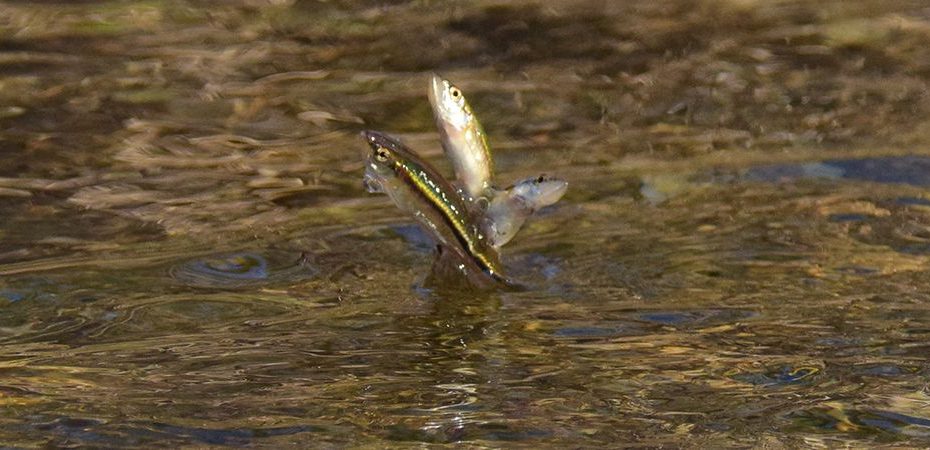Yet again, the people of Ontario are witnessing an attempt by the Ministry of Environment, Conservation and Parks (MECP) to weaken protections for the province’s species at risk. If approved, proposed changes to “streamline” several regulations under the Endangered Species Act, 2007 (ESA) will create new loopholes to harm species at risk and their habitats, despite the well-documented reality that Ontario is “losing more biodiversity than we are conserving.”
The ESA, already drastically weakened by exemptions, amendments and poor implementation, is failing as the last line of defence for Ontario’s most vulnerable plants and animals. Instead of striving to achieve the legislation’s central purpose of protecting and recovering species at risk, the government is choosing the path of further decline.
Ontario Nature and other concerned organizations are speaking up against these alarming proposals, and we’re inviting you to do the same.
Redside dace © Jon Clayton
Our main concerns about the proposed changes are:
Gutting Habitat Protections for Endangered Redside Dace:
MECP is proposing to reduce habitat protection for redside dace, an endangered fish, through amendments to the regulation defining its habitat. First, it wants to limit the timeframe for determining occupied habitat from known occurrences within the last 20 years to known occurrences within only the last 10 years. In addition, the ministry is proposing to narrow the definition of recovery habitat from “areas that would support re-establishment of the species to formerly occupied areas,” to only “streams or other watercourses directly adjacent to occupied habitat” and “areas that are currently suitable for redside dace to carry out its life processes.” These proposed changes would reduce restrictions on harmful activities and undermine species’ recovery efforts.
The only possible interpretation is that the amendments are geared towards facilitating development at all costs. Certainly, they would help pave the way for the proposed Highway 413 – an unnecessary and costly project that stands to impact some of the last remaining potential redside dace habitat in the northern reaches of the Greater Toronto Area (and would harm many other species at risk as well).
Butternut tree with fruit © cdanna2003 CC BY 2.0
Development Prioritized over Endangered Butternut:
MECP is proposing to remove the mandatory 30-day waiting period between the submission of a Butternut Health Expert Report and registration and commencement of harmful activities. The current 30-day waiting period offers the ministry a chance to review the report and potentially intervene, thus incentivizing credible and consistent reporting. The proposed change – in addition to the fact that those completing assessments no longer require training – eliminates accountability and is bad news for butternut. The government’s motivation, as stated in the proposal, is to shorten wait times for development proponents.
Adding Newly Listed Species to Existing Exemptions:
Again, the stated rationale for this change is to “streamline” approvals so that developers “can engage in their proposed activities impacting recently listed species sooner.” MECP’s claim that it will continue “maintaining standards for protecting species at risk” rings hollow given its abject failure to inspect or enforce compliance with requirements to minimize harm that are typically part of qualifying for an exemption. As noted in the 2021 report of Ontario’s Auditor General, annual approvals to harm species at risk increased by 6,262 percent between 2008 to 2020, with 96 percent of approvals granted through exemptions. How can speeding up harmful activities through exemptions with no inspection or enforcement of compliance be seen as “maintaining standards” of a law intended to promote the protection and recovery of species at risk?
Short-eared owl © Andy Reago and Chrissy McClarren CC BY 2.0
Adding Mining Trails to Conditional Exemptions:
Early mining exploration activities are largely already exempt from ESA regulations, yet proposed changes would add trail use, construction, and re-opening to the existing exemptions. Given MECP’s failure to inspect and enforce whether conditions of current exemptions are being met and given the absence of any system to track the cumulative impacts of early exploration mining, the proposed amendments spell nothing but more trouble for species at risk.
The proposed amendments are another example of the Government of Ontario’s relentless push to prioritize development over environmental protection. They fly in the face of the legislated purpose of the ESA: “to protect species that are at risk and their habitats, and to promote the recovery of species that are at risk.”
If you believe, as we do, that MECP should not proceed with the proposed amendments, please consider signing our Action Alert. Let the Ontario government know that such environmental deregulation is unacceptable.
Resources
The post Protections Plummet for Vulnerable Species in Ontario, Again appeared first on Ontario Nature.
